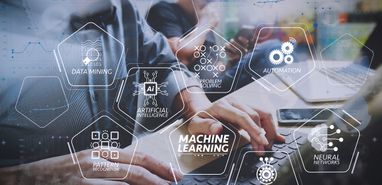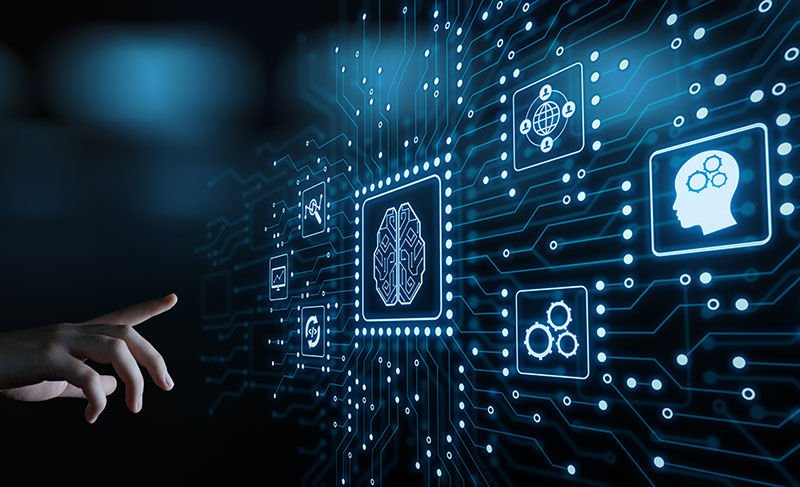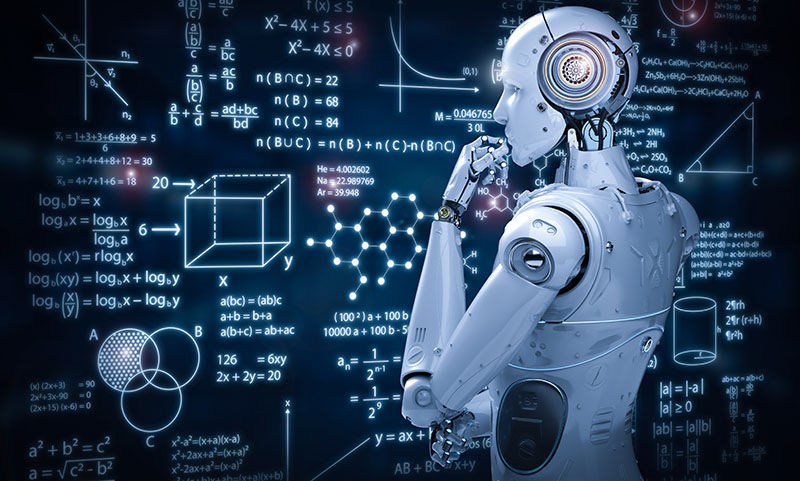
Ever since the dawn of the internet, the marketing landscape has shifted dramatically – making the digital sphere the primary means by which businesses spread their messages. The internet, though, isn’t a single unified marketing channel. Instead, within it, you’ll find sub-channels like social media marketing, content marketing, and other related disciplines. For marketers, that means managing a complex web of related yet distinctly different marketing initiatives, each with its requirements and best practices.
Needless to say, managing all of those separate initiatives isn’t easy. But, the good news is that a whole new range of artificial intelligence (AI) and machine learning (ML) technologies is entering the digital marketing industry, promising to help relieve marketers’ burdens and amplify their efficacy in the medium. So, here is a Tech Loot guide to AI and ML marketing technology to help digital marketers make some sense out of these new tools – from how they are being used to why they’re important.
What is artificial intelligence?

To get started, it’s a good idea first to get a handle on what AI is and what it isn’t. It’s a topic that the public isn’t very well understood, owing largely to the popular culture references that paint it as a future threat to humanity (insert sarcastic robot overlords comment here). However, the reality of AI is, at its core, far simpler than that. Most experts define the concept today as systems that demonstrate intentionality, intelligence, and adaptability.
That means they can take deliberate steps to apply existing knowledge to solve problems as they arise, not pre-programmed. In human terms, it’s akin to our ability to think and reason using the information we already know and understand. With it, such systems can automate decision-making for routine processes with some irregularity (like a chatbot understanding how to answer several variations of the same question).
What is machine learning?

As its name implies, ML is a field of computer science dedicated to studying learning methodologies and how they may be integrated into computer programs. Put simply, it is the technology that may someday make computers capable of learning from new data without any human intervention – in other words, to get smarter with experience and exposure to further information. ML is not only the solution to technical issues but there are some real-world problems that can be solved with machine learning.
It’s easiest to think of ML as a subset of AI. It’s the thing that will allow AI technology to improve itself and expand its own abilities without the need for a human programmer. In reality, ML is the technology that most people conflate with AI in that it’s the closest analog to the portrayals of AI we see on television and in film. The truth is that ML will form the basis of what most experts believe to be the true potential of AI in various applications in the future.
What do ML and AI mean for marketers?
As marketers take advantage of the online landscape, AI and machine learning are (sadly) making management easier than employees or freelancers. With AI-powered video tools, digital advertising tools, social media schedulers, and chatbots, you can be a key part of a team that includes AI tools.
Here are some facts about ML and AI that every marketer should be aware of:
- Current AI technology can boost business growth by about 40%.
- AI saves you time because marketers typically spend more than five hours optimizing their data processes and still fail.
- About 61% of marketers recognize artificial intelligence as an important part of their data strategy.
- 34% of people spend more money because of the ease of shopping online.
- More than 80% of business leaders and technologists believe that AI increases productivity, and nearly 70% are striving further to improve the technology in their business.
- By 2035, AI will make $14 trillion in revenue and increase profits by 38%.
- According to 66% of marketers, ML and AI force the team to focus on strategic marketing activities.
How do AI and ML benefit businesses?
Some of the great advantages of using AI and ML-based marketing solutions include:
- The exploitation of effective business opportunities
- Reduction in marketing costs
- Improved user experience and customer satisfaction
- Increasing accuracy in marketing efforts
- Growth in sales qualified leads
- Better marketing qualified leads
How are AI and ML used in marketing today?
At their current level of development, you won’t find many examples of marketing tools that employ true AI and ML at the same time. However, that doesn’t mean that there aren’t some amazing ways to apply the two leading-edge technologies to marketing tasks. In fact, more AI and ML-powered marketing tools are going into use with each passing day, and they’re sure to proliferate even more in the future. Here are some places you’ll find in the digital marketing field.
1. Conversational AI
The easiest place to begin is with the example of AI that most marketers should already be familiar with – conversational AI. It’s the technology that powered the high-end part of the wave of chatbots that flooded websites and social media channels over the past few years. It’s also at the core of the digital assistants like Alexa, Siri, Cortana, and Google Now that are becoming fixtures in consumer products of all kinds – which has led to some alarming results that we don’t suggest you emulate in your AI deployments.
For marketers, conversational AI can be a game-changer in that it can be used as an always-on marketing representative across digital channels. It’s important to note that not all chatbots use AI. True conversational AI in chatbots is still somewhat rare, and most current-generation chatbots make use of pre-configured dialogue paths (like a tree of potential responses). Some make novel use of AI right now, though, like Mitsuku by Pandorabots.
2. Recommendation engines
A common use of ML in marketing today is by deploying recommendation engines. They’re an ML algorithm that keeps track of customers’ browsing and purchasing habits to build a profile of their likes and dislikes, which can then be used to make targeted suggestions for other products and services that they may like. It’s the technology that allows Netflix to suggest titles you may never have thought to watch and how Amazon seems to know what you’re looking for before you do.
For the average marketer, a recommendation engine can supercharge customer engagement and drive sales, which are two of the primary goals of most marketing initiatives. There are already several open-source recommendation engines available for use today, and they should provide ample options for any company that wants to adopt the technology.
3. Churn prediction
One of the major goals of the digital marketer is to keep existing customers interested in a product or service and engaged with a brand. The problem, however, is that not all customers need the same messages at the same time. It’s challenging for marketers to discern when a customer is about to jump ship to a competitor or churn in industry parlance. With an ML solution in place, marketers can get advance warning when they need to be concerned about a customer departing in the form of a prediction of future behavior.
Systems that implement such predictive analytics aren’t ML in the strictest sense. They merely analyze existing data and rely on pre-set data models to determine probabilistic outcomes – such as a customer disengaging from a business. With ML added to the mix, the same system can also learn from each intervention – like sending a sale offer to a customer before they go elsewhere – and figure out what kind of interventions work and which don’t. That enables marketers to automate customer retention tasks without fear that leaving it to the machine will increase churn rates.
4. Customer segmentation
Today’s multi-channel marketing efforts are carefully designed to reach different audiences in different places and at different times. However, figuring out how to do this has heretofore been something of a dark art practiced by marketing professionals. That’s because there’s a certain feel to figuring out what makes for an effective segment in a given customer group, and there are several ways to do it.
ML systems take the guesswork and intuition out of customer segmentation, substituting hard data and careful analysis in their place. By examining multiple available data points, from customer behavior to past purchased history, and any other relevant information available, an ML system can create customer clusters through an unsupervised learning process – in other words, you feed it the information, and it will output the most effective and specific segmentation possible based on the data.
5. Content creation

One of the most valuable and effective tools in the digital marketer’s toolbox today is content marketing. It’s a way of attracting attention to a product or brand by connecting it with valuable information related to what potential customers want. When done well, it can increase a given website’s reputation, traffic level, and search rankings and provide a steady stream of visitors that should be primed to engage with the business.
The big problem, of course, is creating the content that makes such a strategy possible. Today, content creators have any number of AI-powered tools to help them churn out high-quality online content at scale, lowering the cost of cash and time required to power a content marketing effort. In the near future, though, AI might even supplant the human army of writers worldwide that create all of the articles, blog posts, and tweets that make up the modern internet – that is, if AI developers deem it safe to allow that to happen.
AI and ML in marketing: it’s just the beginning
It should be obvious by now that AI and ML solutions are already very much available within the world of digital marketing. However, the earliest examples are more commonly used than you may have realized, and the latest technology is evolving rapidly. For marketers, that portends a future where they will work almost side-by-side with their AI and ML solutions, creating value for the businesses they serve and driving new growth and bottom-line success – and that day may not be as far off as you might think.





![Why Businesses Need Artificial Intelligence [Infographic]](https://ik.imagekit.io/techloot/wp-content/uploads/2018/04/tr:n-tl_image_grid_2_mb/AI-business-1024x683.jpeg)

By Andrej Kovacevic
Updated on 1st August 2022